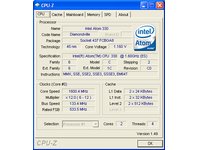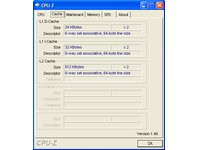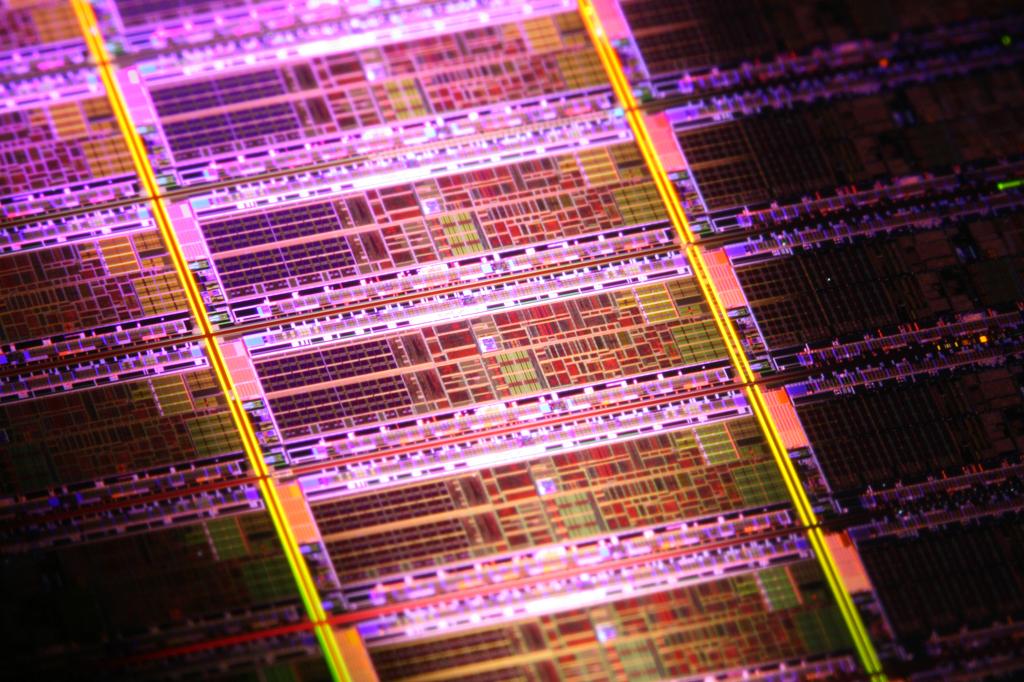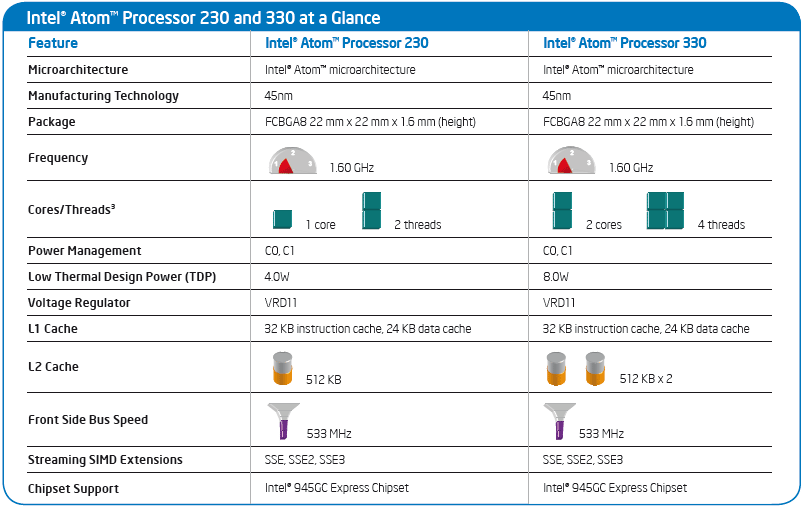Does Intel's Dual-Core Atom Improve Efficiency?
Inside Atom
While the Core processors were designed for full-featured desktop and notebook PCs, the Atom family was created for extremely cost-effective systems, and for ultra-portable and compact devices such as netbooks and nettops. Intel says that Atom is its smallest and lowest power processor, and that’s true: its 47 million transistors and footprint of only 26 mm² are unmatched.
The Platform Approach
The Atom processor was designed from the ground up, which we believe was necessary to create a really power efficient device. The chipset, however, was taken from Intel’s shelves and modified for deployment with Atom.
Desktop platforms utilize the 945GC, which is a 945G with added 45 nm support and FSB speed limited to 200 MHz (FSB800). It can be combined with ICH7 southbridges and Intel guarantees 7+ years product availability. However, being a mainstream desktop chipset, it isn’t really a low power part: the chipset is rated at 22.2 W TDP, plus 3.3 W for the ICH7 and 4 W for the Atom processor. You can find the full 29.5 W TDP on Intel’s Automated Relational Knowledgebase at ark.intel.com. As we found out in November 2008, an entry level Core 2 desktop system based on a G31 motherboard can actually deliver much better performance per watt than such an Atom system.
Atom mobile platforms are based on a 945 version called the 945GSE, which is limited to a 6 W TDP, has a maximum of only 2 GB of RAM, and is restricted to DDR2-533 rather than DDR2-667 for power reasons. Paired with a mobile Atom N270 and an ICH7M mobile southbridge it stays within a total TDP of only 11.8 W, which is a great result.
Atom Models
Intel provides lots of details on its website, and especially in its processor database.
Get Tom's Hardware's best news and in-depth reviews, straight to your inbox.
| Atom Processors | Clock Speed | L2 Cache | TDP | Cores |
|---|---|---|---|---|
| Atom 330 | 1.60 GHz (FSB533) | 2x 512 KB | 8 W | Two |
| Atom 230 | 1.60 GHz (FSB533) | 512 KB | 4 W | One |
| Atom N270 | 1.60 GHz (FSB533) | 512 KB | 2.5 W | One |
| Atom Z500 | 800 MHz (FSB400) | 512 KB | 0.65 W | One |
| Atom Z510 | 1.1 GHz (FSB400) | 512 KB | 2 W | One |
| Atom Z520 | 1.33 GHz (FSB533) | 512 KB | 2 W | One |
| Atom Z530 | 1.60 GHz (FSB533) | 512 KB | 2 W | One |
| Atom Z540 | 1.60 GHz (FSB533) | 512 KB | 2.4 W | One |
Atom 230 is the mainstream model that can be found on most of the Atom-based integrated motherboards. At $29 per 1,000 units, it is very affordable, but as mentioned above, the platforms mainly provide low power operation—not high efficiency defined as performance per unit of power used.
The Atom N270 is the mobility model, also running at 1.60 GHz and the same FSB533. However, this model is rated at only 2.5 W TDP. Hence it is most suitable for netbooks and similar mobile and low power applications.
The Z model line is the most power efficient, starting at 800 MHz and 0.65 W TDP, and going up to 1.86 GHz at only 2.4 W TDP. As you can imagine, these models are more expensive due to their higher efficiency. However, the Z series does not support Hyper-Threading, which is one of the reasons why they are more power efficient.
In this review, we compare the Atom 330 dual-core against its Atom 230 single-core brother and a Core 2 Duo E7200 machine, which has the potential of beating the Atom in terms of performance per watt. How will the dual-core Atom 330 do?


Current page: Inside Atom
Prev Page Atom 330: Dual-Core To The Rescue? Next Page Platform: Jetway NC92-330-LF
